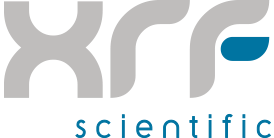The Importance of Spectrometer Calibration
A spectrometer is a term used for any instrument that is used to study, identify and analytically measure electromagnetic radiation that is emitted by a material, in order to identify the elemental composition of a material.
In X-ray fluorescence (XRF) spectrometry, samples are flooded with high-energy X-rays to find out what a material is composed of. This is carried out by measuring the fluorescent, or secondary, X-rays that are produced once they have interacted with the primary X-ray source.
What Is Spectrometer Calibration?
Although the XRF instruments hold many strengths, like any machine or instrument, they need regular maintenance in order to ensure an optimal performance. When a spectrometer is calibrated, it ensures the instrument is ‘set back to zero’ and that no defects are present. Any defects will impact the reliability and accuracy of the data provided by the spectrometer, and as a result will provide incorrect results.
Why Is It Important?
Spectrometer calibration is important not only to ensure that the instrument provides accurate results, but also to determine if there are any faults with the spectrometer.
If damaged, unused or left unchecked for long periods of time, it is far more likely that a spectrometer will have ‘drifted’, thus the importance of regular calibration checks.
Drifting could be highlighted if the spectrometer is providing a range of results for one substance, and is therefore providing readings that are inaccurate. Calibrating the spectrometer could highlight any issues and allow the analyst to rectify them.
What Are Drift Monitors?
Drift monitors are used to determine the stability of an XRF spectrometer. They can detect the smallest of defects, which is key to ensuring the instrument is performing at optimal level and providing reliable results.
At XRF, we have a vast depth of knowledge of sample preparation and quality assurance in spectroscopy, and our monitors have been created based on years of expertise in developing products for XRF spectroscopy. However, it is important to note that our monitors are not Certified Reference Materials (CRM).
Our Ausmon drift monitors are suitable for supporting drift correction of XRF instruments in a wide range of fields, some of which include:
- Cement
- Nickel
- Silicates
- Iron ore
- Mineral sands
What Are Their Benefits?
There are numerous benefits to calibrating spectrometers with drift monitors, all of which are crucial to achieving accurate test results.
The benefits of calibration include:
- Supporting the long term stability of the spectrometer
- Being more affordable than conventional spectrometer calibration methods
- Ensuring optimal performance of the spectrometer
- Reducing the risk of ‘drifting’
Without frequent calibration, interference from light sources, fluctuation in temperatures and dust particles can result in drifting with the spectrometer. Keeping a spectrometer well calibrated will ensure it works efficiently, accurately and will stream-line work processes by minimizing the risk of errors or interference.
If you’re looking to purchase a drift monitor for your business, or would like more information about spectrometer calibration, please get in touch with us via the contact form.









